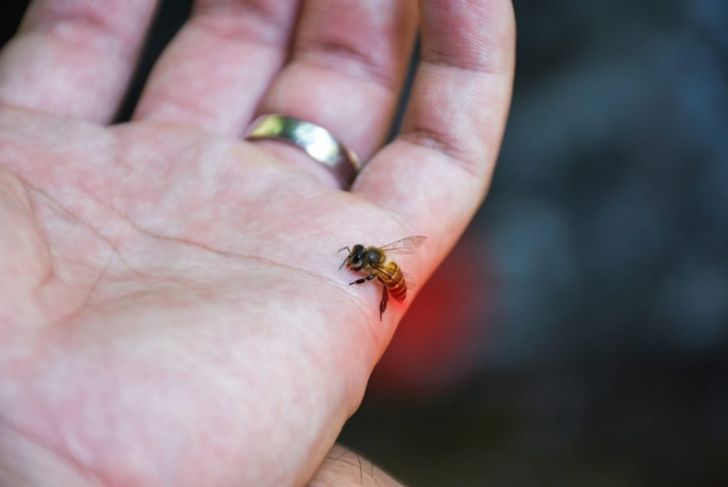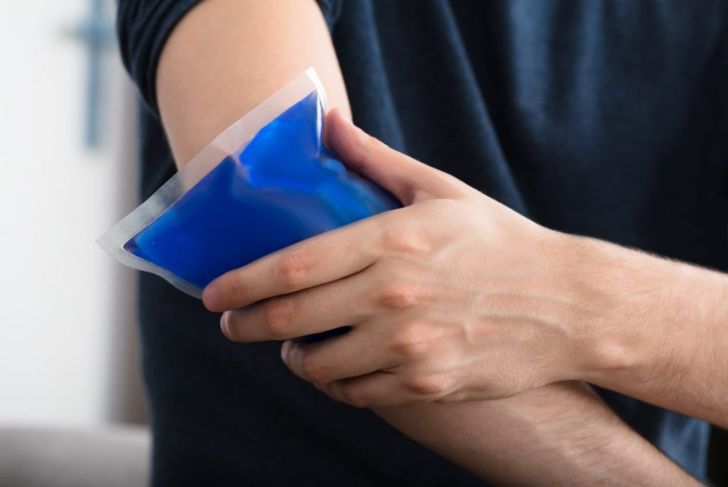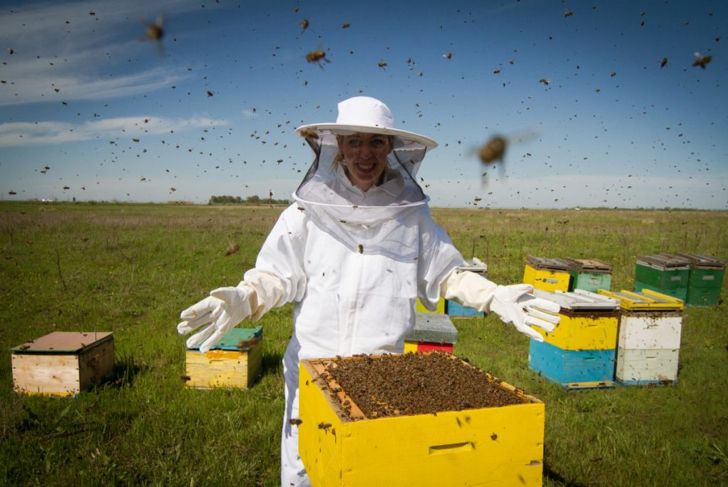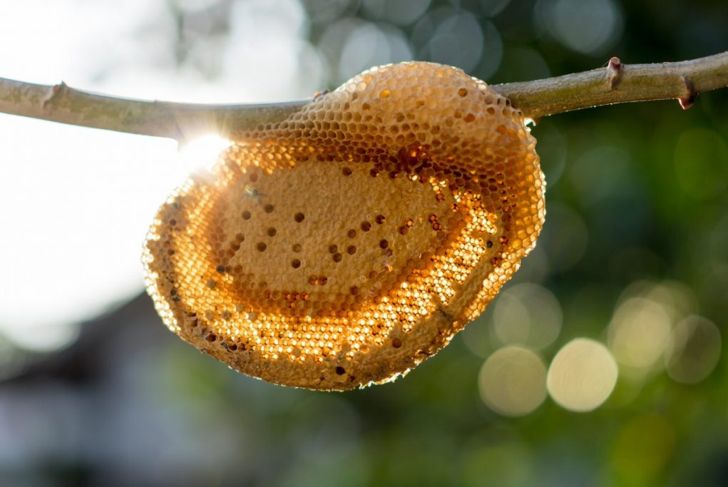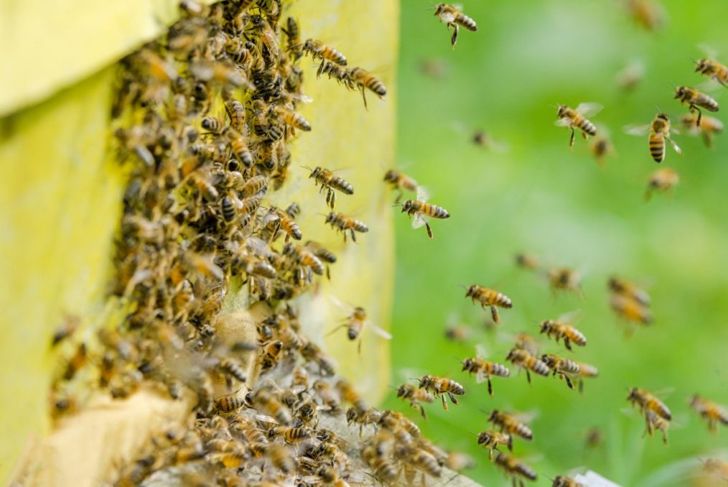For most people, bee stings are an occasional nuisance generally alleviated with only mild discomfort. However, for some, a bee sting is a guaranteed trip to the hospital — around three percent of adults experience serious allergic reactions after being stung by an insect. In the United States, between 40 and 100 people die from insect stings every year. It can be difficult to predict what type of reaction one will have to a sting, and the severity of a reaction can change as a person ages.
Results of a Sting
Most people experience only mild discomfort when stung by a bee. Minor symptoms usually include some pain or itching, redness, and swelling at the site of the sting. If the body has a sensitivity to bee venom, however, redness and swelling may increase in severity. These large local reactions usually take more than a week to heal fully. A person who experiences a moderate reaction has a five to ten percent chance of developing increased reactions to future stings. People who have severe bee sting reactions generally experience anaphylaxis.
Symptoms of Anaphylaxis
When a person has an acute allergic reaction to something like a bee sting, the body becomes hypersensitive and begins to go into shock. The skin may become pale or flushed, with large red hives. Difficulty breathing and abdominal pain are also common. More severe reactions may even result in loss of consciousness or cardiac arrest. For most people, these symptoms develop rapidly, usually within a few minutes of being stung. However, in some rare instances, it can take over thirty minutes for the symptoms to begin.
Treatment for Moderate Reactions
Mild and moderate reactions to bee stings are usually treatable at home. When a bee stings a person, the stinger is embedded in the skin. To treat the sting, the individual or a caregiver must remove the stinger with a pair of tweezers. It is important to not squeeze the venom sac on the end of the stinger, or additional venom may enter the wound. Afterward, a cold compress can combat swelling and steroid ointments can help fight the venom. The symptoms usually vanish within a few days.
Treatment for Severe Reactions
Severe reactions require immediate attention and medical aid. The more severe symptoms and reactions can occur within five to ten minutes of being stung. If possible, the individual should be given a shot of epinephrine immediately and transported to the emergency room to receive oxygen and intravenous fluids. Until emergency services arrive, the person should lay flat on their back with the feet elevated to assist blood flow — this can counteract the dizziness most people experience with anaphylaxis.
Screening for Bee Allergies
Bee stings and the resulting reaction vary greatly. Because of this, there is no official pre-screening for bee allergies. If a doctor deems it necessary, he or she may perform a skin test by injecting a small amount of bee venom, usually into the arm. If a raised bump appears, the patient has a bee allergy. Blood tests can also measure the body’s immune system response to bee venom.
Preventing Stings
Many people have never been stung by a bee, and the lack of pre-screening means a person may not know for a long time that they have an allergy. Of course, the best way to prevent a reaction is to prevent a sting. Avoid the urge to swat at insects, especially bees and wasps. If an insect comes close, walk away calmly at a casual speed — this is often enough to avoid a sting. Bright-colored clothes and perfumes also attract bees.
Risk Factors for Bee Venom Allergies
Certain risk factors make a person more likely to react adversely to bee stings. Living near or in an area with active beehives is an obvious risk, but even living in areas where bees are actively pollinating flowers and other plants raises the likelihood. Previous bee stings increase the potential for a severe reaction to the next sting. In some cases, certain medications weaken the body’s response to bee stings. Perhaps the most unavoidable risk factor is age — children are significantly less likely to have serious reactions to bee stings than adults.
Multiple Bee Stings
Most bees are not aggressive — a sting is a warning. However, if a person disturbs a hive, the bees may swarm and sting as a group. Bee stings leave behind a pheromone that alerts the other bees and prompts them to keep stinging the victim. Accumulating more than a dozen stings in a short period can lead to severe anaphylaxis and can be fatal. Children, the elderly, and people with heart or breathing issues should be the most cautious of these mass attacks.
Long-Term Treatment Options
In recent years, there have been many tests around treatment and prevention of bee allergies. Immunotherapy options may desensitize a person to the allergens found in bee venom. This involves receiving several doses of bee venom in steadily increasing amounts over the course of several years, allowing the immune system time to develop a tolerance.
Living With a Bee Allergy
Ultimately, bee allergies are debilitating. Those who know they may have a strong allergic reaction can opt to carry some form of injection device in order to mitigate the effects. Knowing how to avoid being stung in the presence of bees may prevent stings from occurring altogether. If bee stings are a frequent concern, people can choose clothing that protects as much of the body as possible; long sleeved shirts and jackets and thick materials can prevent a sting from reaching the skin. Close-toed shoes are helpful additions.

 Home
Home Health
Health Diet & Nutrition
Diet & Nutrition Living Well
Living Well More
More